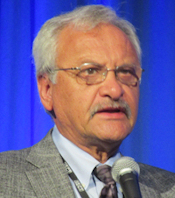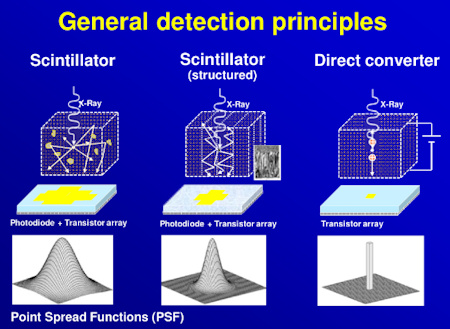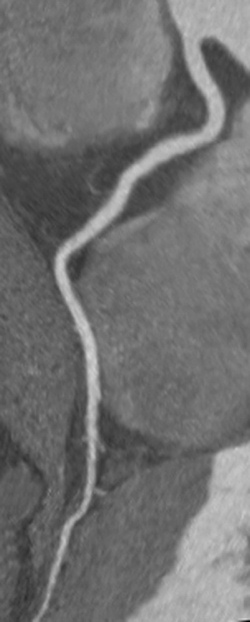Sure, radiation dose-monitoring software can easily provide vital benefits such as dose alerts when imaging studies generate high radiation doses for patients. But the software can also be invaluable for facilitating important workflow changes, Belgian researchers recently reported.
Based on data calculated by their radiation dose management software, a team from Antwerp University Hospital was able to implement a number of changes, including changing alert settings and CT protocols for patient weight-sensitive procedures and implementing alerts for nonstandardized mammography studies.
"For the goal of improving quality and efficiency, we strongly believe that there is big potential in the data that is contained in dose-management software," said Timo De Bondt, PhD, a self-employed medical physicist associated with the radiology department at Antwerp University Hospital.
De Bondt presented the research during a scientific session at the recent ECR 2016 in Vienna.
Standard monitoring
Standard use of dose-tracking software usually involves generating alerts (typically when radiation dose reaches two times median dose levels), implementing a high-dose justification policy for technologists, and reporting of dose data to administrators. The researchers believe, however, that dose-tracking software offers a lot more potential beyond these basic capabilities.
"What we're trying to do now is have some more creative use of the functionalities of this software tool to understand and improve the workflow and evolve from dose-management software toward an internal audit/management tool," De Bondt said.
Using the DoseWatch dose-tracking software (GE), the group reviewed radiation dose data from imaging studies performed at Antwerp University Hospital from July 2015 to December 2015, encompassing two CT, two mammography, two interventional radiology (IR), and six computed radiography (CR) systems. For each modality, multidisciplinary dose teams configured specific alert settings for the software and also developed a standardized procedure for justifying higher dose that includes a predefined list of comments.
"It must be noted that the alerts we trigger now are not necessarily related to the excessive use of radiation," De Bondt said.
CT dose alerts
The institution performed 8,089 CT studies in the six-month period, with 977 exams (12%) triggering alerts from the dose-tracking software. Of the 977 alerts, 766 (78%) were justified, De Bondt said.
Justification for CT dose alerts included the following:
- Patient weight: 39%
- Extra image series: 19%
- Longer scan: 18%
- Cardiology: 17%
- Other: 3%
- Wrong protocol: 2%
- Arms next to body: 1%
Based on these findings, the department changed alert settings and protocols for patient weight-sensitive procedures, De Bondt said.
The need for an extra image series generated some food for thought, he added.
"To what extent is the exact procedure known in advance?" he said. "Is this extra series based on a clinical question, or is it just a miscommunication between the technician and the radiologist, or the radiologist and the referring physician? We intend to find out."
Cardiology imaging studies at their institution are performed by cardiology department staff, who are not as well-trained in dose risks, he said.
"The obvious action we need to take here is to go knock on the door of the cardiology department and actually train them, because there is an excessive amount of radiation used there," De Bondt said.
Mammography/IR
There were very few dose alerts for mammography studies; only 14/1,666 (0.8%) triggered a dose alert, which were based on the European directives for dose based on breast thickness. Interested in how many mammography procedures at the institution were performed with the standardized number of views, the group found that 80% of procedures have a standard number of radiation events, De Bondt said.
As a result, the team changed the alert settings to provide alerts when there's not a standardized number of mammography "takes," he said.
"So we actually get standardization alerts," he said. "We intend to find out why we have only 80% standardization, because we obviously want to go to 100%."
The team also found "excellent" compliance in the interventional radiology (IR) rooms, De Bondt said.
Share of dose alerts from interventional radiology procedures:
- July 2015: 27% (96% of which were justified)
- August 2015: 18% (100% of which were justified)
- September 2015: 9% (100% of which were justified)
- October 2015: 23% (90% of which were justified)
- November 2015: 15% (100% of which were justified)
- December 2015: 23 (100% of which were justified)
De Bondt noted, however, that almost all of these alerts were justified due to "difficulty of procedure," which is too vague a reason.
"We can't learn anything from that, so we are changing the list of comments here [for justification]," he said.
CR
In CR, approximately 30% of exams -- representing several hundred studies -- were generating alerts. Because that's a lot of exams for which to require justification, the researchers are initially implementing the justification process on a subset of procedures. That data is just now starting to come in, he said.
"We've had a discussion with the dose team and we think that a lot of the alerts are probably [from] fluoroscopy due to lack of blind positioning in the practice," De Bondt said. "But why is it? Is it a lack of education? Is it patient movement? Is it maybe the pressure due to high patient throughput, like the patient waiting room is too full and you really need to go fast? It would be interesting to find out."
Dose-management software such as DoseWatch has a lot of potential and a lot of data from which institutions can extract really valuable data on their workflow, De Bondt concluded.
Institutions can make use of the data gathered by the dose-tracking software to configure the amount and nature of alerts, as well as implement a standardized justification policy for alerts, De Bondt said.
"Based on the analysis, you can understand and adjust the workflow of your department," he said. "Feedback from the workflow is vital in every aspect, everywhere."



